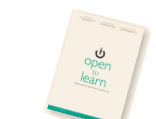Pearson
- Introduction
- Strategy
- Performance
- Responsibility
- Governance
- Financials
- Other info
- Always learning
Outlook: 2011
Over the past five years Pearson has produced, on average, 16% growth in earnings and cash flow. We sustained our growth even in the face of very tough economic and market conditions in recent years. We are planning for some of our markets to remain weak in 2011, particularly those that depend on government spending and traditional print publishing business models. In addition, we face tough comparatives (especially in the first half of the year) after our particularly strong competitive and financial performance in 2010.
Even so, we have built a series of competitive advantages which should help us deliver another good year in 2011. These advantages include our sustained investment, digital leadership, educational effectiveness, positions in fast-growing economies and operating efficiency.
Education
In education, we expect to achieve continued growth in 2011. In North America, we see growth in higher education (despite slower enrolment rates) and assessment more than offsetting a slower year for the school publishing industry (the result of the lower new adoption opportunity and pressure on state budgets). Our International education business will benefit from its rapidly-growing position in services, technology and developing economies, enabling it to grow again despite the weak public spending environment in some markets.
FT Group
At the FT Group, we are rapidly shifting our business model towards digital and subscription revenues. Advertising revenues remain unpredictable, but we see healthy demand for the FT’s premium content, especially in digital formats, and a recovery in business conditions for Mergermarket.
Penguin
Penguin will face another year of fast-changing industry conditions, driven by the rapid growth of both digital sales channels and digital books, and by the resulting pressures on physical bookstores. After particularly strong competitive performance and financial results in 2010, we expect Penguin to perform in line with the overall consumer publishing industry this year, while we continue to adapt the business to these industry changes.
Interest and tax
In 2011, our lower net debt level and pension finance charge will result in a lower interest charge to adjusted earnings than in 2010. We expect our P&L tax charge against adjusted earnings to be in the 24–26% range and our cash tax rate to be in the 15–20% range.
Exchange rates
Pearson generates approximately 60% of its sales in the US. A five cent move in the average £:$ exchange rate for the full year (which in 2010 was £1:$1.54) has an impact of approximately 1.3p on adjusted earnings per share.

